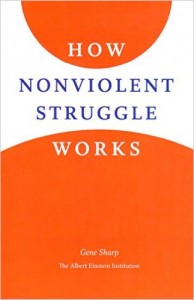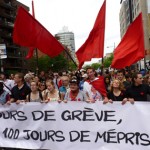 Extrait de l’ouvrage: Basic Elements in Nonviolent Freedom; 37 p.
Extrait de l’ouvrage: Basic Elements in Nonviolent Freedom; 37 p.
Pour consulter l’ouvrage complet, veuillez cliquer sur Basic Elements in Nonviolent Strategy
The strategy and tactics of war have been carefully developed and studied, and major attempts have been made to develop underlying theory. Maxims, rules and systems for conducting war have been formulated in response to “urgent want.” In the field of nonviolent action there has been to date no comparable development. Gandhi made the most important conscious efforts to develop strategy and tactics in this technique of struggle. He was, however, neither an analyst nor a theorist; hence, GROUNDWORK FOR NONVIOLENT ACTION despite his contribution in practice and his passing observations, the analysis and formulation of strategy and tactics have been left to others. Only comparatively recently has attention been turned to the examination of the problems and possibilities of strategy and tactics in nonviolent struggle against would-be internal dictators or invaders.124 Attention is needed both to the broad field of strategy and tactics and to the specific problems which are likely to arise in facing particular opponents and in achieving particular objectives.
Strategy and tactics are of course present in various forms and degrees in many aspects of social life. They are, however, especially important in military action and nonviolent action, which are both techniques by which social and political conflicts are conducted when they have developed to the point of open struggle and a pitting of strength. There appear to be some points at which insights from military strategy may be carried over into nonviolent strategy; and there are also points at which military insights must not be carried over, because the nature and dynamics of the two techniques of struggle differ radically. This section is therefore not purely descriptive or analytical of existing observations on strategy in nonviolent action; it also involves the incorporation of principles of military strategy where these seem valid for the nonviolent technique, and where the military sources are clearer and more explicit than observations from nonviolent actionists.
Here are some brief definitions of basic strategic terms: grand strategy is the broadest conception which serves to coordinate and direct all the resources of the struggle group toward the attainment of the objectives of the conflict. Strategy, a more narrow term, is the broad plan of action for the overall struggle, including the development of an advantageous situation, the decision of when to fight, and the broad plan for utilizing various specific actions in the general conflict. Tactics refer to plans for more limited conflicts within the selected strategic plan.

